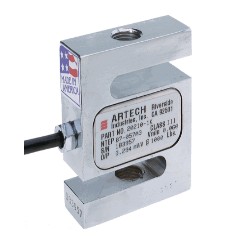You can step on a scale at the doctors office or buy fresh produce off a scale at the farmers market. Either way the scale you are looking at includes a load cell inside. But, how exactly does that load cell work? What does a load cell do? How does a load cell send weight data to a digital weight display? Let’s find out.
What is a Load Cell?
For our example, we are going to focus on the most common load cell which is the strain gauge cell. A strain gauge load cell is a type of device used to measure weight or force. It is commonly used in a variety of applications, such as weighing scales, process control automation, and testing and measurement. The load cell works by converting a force, such as the weight of an object, into an electrical signal that can be measured and send weight data to a computer.
There are several types of strain gauge load cells. This type of load cell consists of a small metal beam or rod, often made of aluminum or alloy steel, which is attached to a base. The beam is designed to flex or bend slightly under the weight or force applied to it.

How Do Load Cells Work?
At the heart of the strain gauge load cell is a thin, flexible strip of material called a strain gauge. The strain gauge is attached to the beam in a specific pattern, known as a Wheatstone bridge configuration. When the beam is subjected to a force, it will flex or bend slightly, causing the strain gauge to stretch or compress. This change in the length of the strain gauge results in a change in its electrical resistance. Continue reading
